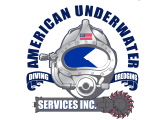Prairie Meadow Park is in Plano, Texas. It features a huge playground, picnic tables, a shade pavilion, and a decent-sized pond. In other words, it is an all-American park where people can come, relax, and recreate.
Over the years, the pond’s water quality has gone from crystal clear to dark and murky. During the hot summer months, noxious and unsightly algae blooms were a regular occurrence. People would often complain about the horrible smells and discoloration of the water.
Over time, rainwater runoff has polluted the ponds by carrying trash, muck, and debris into the water. As the runoff entered the water, it made its way towards the bottom of the pond, where there was little oxygen and bacteria could not break it down. This organic sediment fed massive algae blooms that started to choke the life out of the pond.
There was a need for action – but what should be done?
The Dilemma
The city of Plano faced a real challenge: How to clean up the pond without going over budget, damaging the park without using lots of heavy equipment, or harming the aquatic wildlife that has taken up residence over the years?
Total pond restoration was out of the question. It would cause more damage than fixed, have costs that could spiral out of control, and potentially cause a fish and turtle to die off.
After researching their options, they turned to us for help. At American Underwater Services, we have helped countless cities and municipalities fix their polluted and unsightly pond and lake problems.
After the city agreed to our job proposal, we cleaned up the unsightly pond.
Here’s a video of the job that we performed:
The Solution
Our mission was clear, even if the quality of the water wasn’t. We were tasked with cleaning the water and removing debris and organic sediment, which caused the unsightly and offensive algae to bloom — but without disrupting the aquatic wildlife and causing as minor damage to the surrounding grassy areas as possible.
We had our work cut out for us.
We sent in our professional divers to perform a hydraulic restoration. Our divers first suited up in their commercial diving equipment. Once all pre-dive safety checks had been reviewed, the site supervisor gave the divers the all-clear to enter the water.
Afterward, they used a powerful underwater vacuum to remove the organic sediment that caused unsightly algae blooms in the pond. If the diver came across any non-organic debris, such as a shopping cart, discarded bike, or other trash, they would stop vacuuming and work with the land crew to remove the hazard.
Now, here’s where things get exciting and pretty cool.
The Disposal
Once the vacuum sucked up water and organic sediment off the bottom of the pond, someone had to clean it. Before entering the water, our divers set up several huge bags, 30 feet wide and 100 feet long. These bags can hold thousands of gallons of water and sediment simultaneously.
The system works by sucking the water and muck off the bottom of the pond and transporting them a short way up the bank to the self-contained bags. The muck and organic debris are filtered out, and clean water comes out on the other end, immediately returning to the pond.
The City of Plano estimated that we removed around 3,300 yards of unwanted sediment from the pond. Once the job is complete and the bags are full, we will load them onto a dump truck and remove them off-site. All that’s left is a clean pond that will provide a better quality of life for all birds and aquatic animals that call the pond home.
Best of all, when the hot summer months arrive, visitors won’t be bombarded by the foul, offensive odors caused by out-of-control algae blooms due to the excess organic sediment on the bottom of the pond.
Pond Cleaning Services by American Underwater Services
If your city pond looks like it has seen better days, call us at (817) 377-8512. At American Underwater Services, we have decades of experience helping cities and municipalities clean up their ponds and waterways. Contact us to learn more about how our services can help improve not only your ponds, lakes, and rivers but also the quality of life for all who recreate and live nearby.


